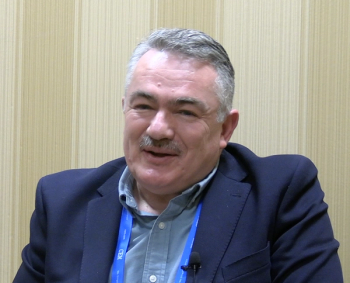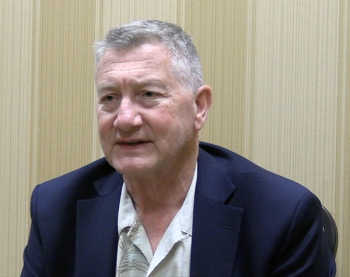
Advancements in Measuring Europium Isotopic Composition Revealed
A team of French researchers has developed a high-precision method for measuring the isotopic composition of europium (Eu) using multi-collector inductively coupled plasma mass spectrometry (MC-ICP-MS), shedding details on the isotopic systematics of this element in geological samples.
In a newly published paper in the Journal of Analytical Atomic Spectrometry, lead author Lukas Nicol from Université Clermont Auvergne and his team have presented a high-precision method for measuring the europium (Eu) isotopic composition of geological reference materials (1). The study addresses the limited understanding of Eu isotopic systematic and aims to uncover potential variations within Earth's major reservoirs.
Eu isotopic composition has received relatively little attention in previous research, and the extent of its variability remains largely unexplored. To fill this knowledge gap, the researchers developed a comprehensive chemical protocol for the separation of Eu from various sample matrices. They employed multi-collector inductively coupled plasma–mass spectrometry (MC-ICP-MS) for high-precision isotopic measurements.
MC-ICP-MS is an analytical technique used for precise isotopic analysis of elements. It combines inductively coupled plasma (ICP) as the ionization source with multiple detectors known as collectors. These collectors are positioned at different angles to simultaneously measure isotopic ratios. The collected ions are separated based on their mass-to-charge ratios and then directed to the respective collectors. The simultaneous measurement of isotopic ratios allows for high-precision analysis and the determination of isotopic compositions in complex samples. MC-ICP-MS is widely used in various fields, including geology, environmental science, and forensic analysis, to study elemental and isotopic variations and understand geological processes, environmental impacts, and trace element distributions.
One challenge encountered during the study was the potential isotopic fractionation induced by the chemical separation of Eu through ion chromatography. To mitigate this issue, the team paid careful attention to minimize analytical artifacts. Additionally, since Eu possesses only two stable isotopes, the researchers investigated different methods to correct for instrumental mass bias.
Among the methods explored, the team discovered that the most effective approach involved doping the samples with samarium (Sm), an element closely related to Eu. This technique significantly improved precision and trueness in the measurements.
By conducting complete duplicate analyses, the team assessed the repeatability standard deviation (2SD) of the entire procedure, which yielded a remarkable 50 ppm on the 151Eu/153Eu ratio (equivalent to 0.5 ε unit). This level of precision is two to four times better than previously published procedures, highlighting the advancements made in Eu isotopic composition measurement.
Analyzing various igneous and sedimentary reference materials, the researchers found that their Eu isotopic compositions aligned closely with the reference standard NIST 3117a within the uncertainties, indicated by εEu = 0 ± 0.5.
The development of this high-precision method provides a valuable tool for further investigations into the isotopic composition of Eu in different geological samples. The findings enhance our understanding of the isotopic systematics of Eu and contribute to unraveling the potential variations within Earth's major reservoirs. The study conducted by Nicol and his colleagues showcases the significance of precise Eu isotopic measurements and establishes a foundation for future research on this subject.
Reference
(1) Nicol, L.; Garcon, M.; Boyet, M.; Gannoun, A.High-precision measurement of europium isotopic composition of geological reference materials by multi-collector inductively coupled plasma mass spectrometry (MC-ICP-MS). J. Anal. At. Spectrom. 2023, ASAP. DOI:
Newsletter
Get essential updates on the latest spectroscopy technologies, regulatory standards, and best practices—subscribe today to Spectroscopy.



